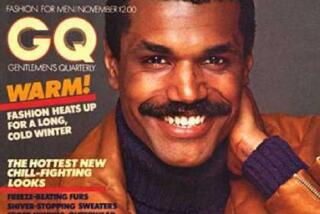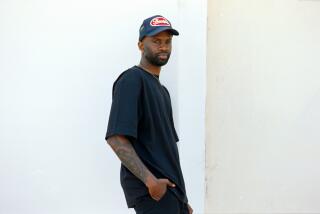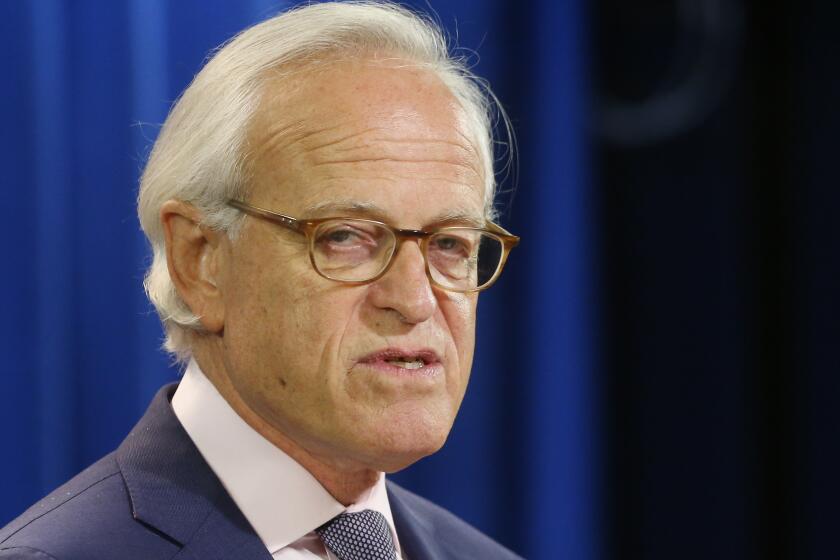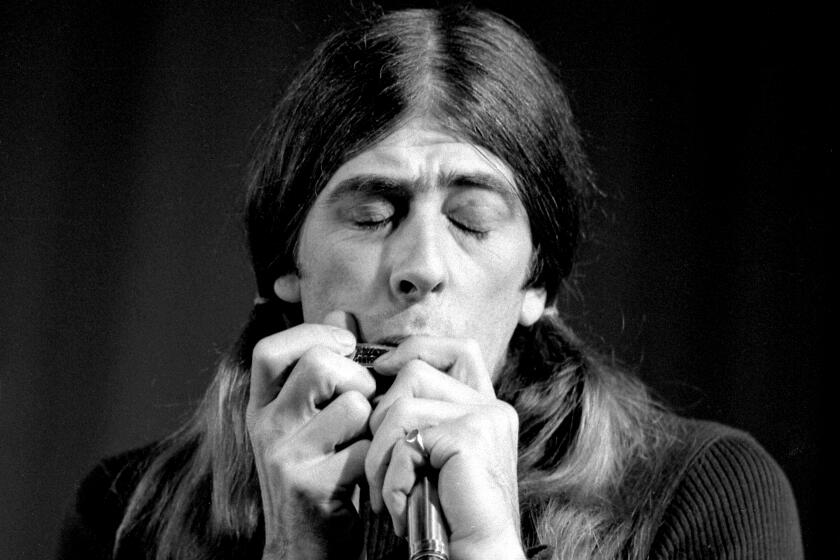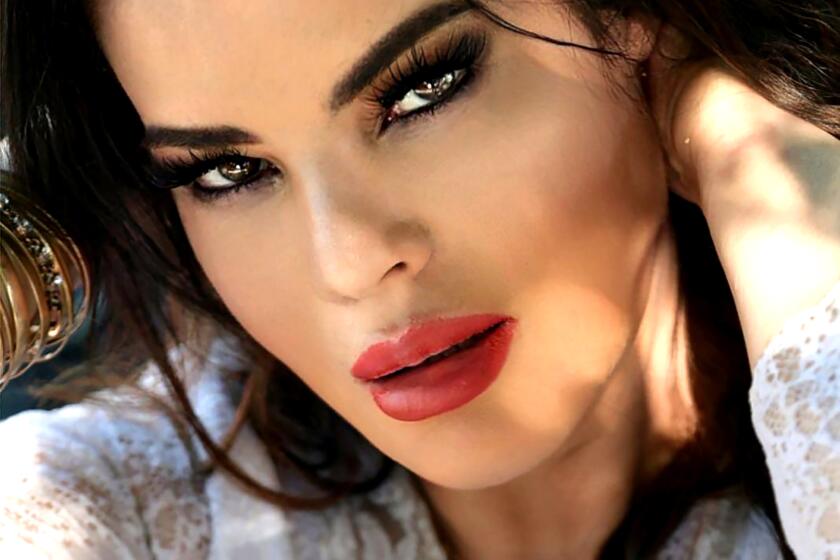Tony Gleaton dies at 67; photographer of black life in West, Americas
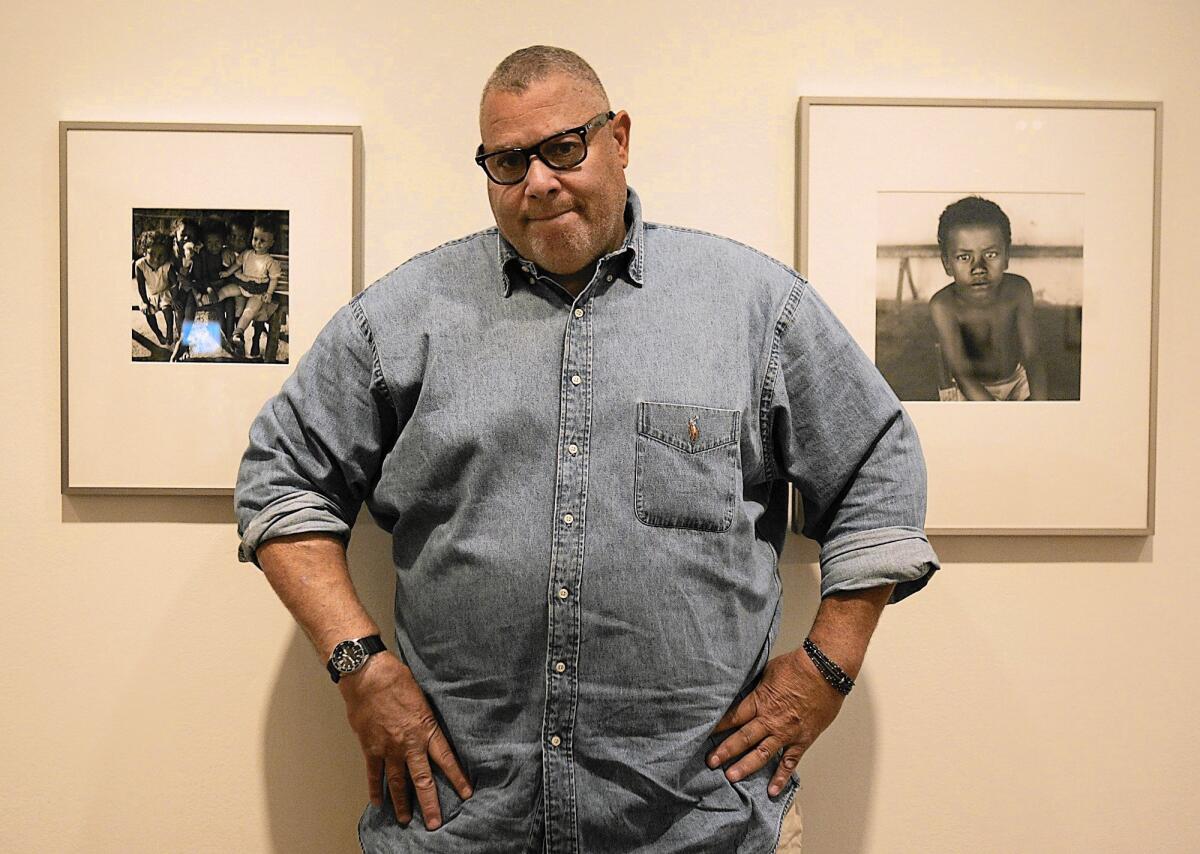
Tony Gleaton in 2007.
In the late 1970s Tony Gleaton was immersed in the glossy world of New York fashion photography, aspiring to craft images for major magazines. “I used to live and die between the pages of British Vogue,” he once recalled with chagrin.
But around 1980, he pitched his glamorous career and hit the road, beginning an odyssey that exposed him to a different conception of beauty and what it meant to be black.
First he hitchhiked through the West, photographing African American rodeo riders and Native American ranch hands. Then, after hearing about a century-old enclave of blacks not far from Acapulco, Mexico, he headed south of the border, shocking people when he — a light-skinned African American with green eyes — said he was looking for “blacks like me.”
In villages scattered along Mexico’s coasts, he found them — descendants of African slaves brought to Mexico by the Spanish — and took their pictures.
His best-known images formed “Africa’s Legacy in Mexico,” a traveling Smithsonian exhibit that was shown in galleries around the country for a decade, starting in the early 1990s. He later captured the faces of the African diaspora across Latin America.
“He was the first to bring to the public eye these living, breathing communities,” said Deborah Lynn Mack, an associate director at the National Museum of African American History and Culture in Washington. “They weren’t exotica. They were like the cousins you didn’t know you had.”
Gleaton, whose luminous black-and-white portraits were notable for their subjects’ dead-on stares, died Aug. 14 in Palo Alto from oral cancer, his wife, Lisa, said. He was 67.
Six-foot-four and weighing more than 300 pounds, Gleaton not only was physically imposing but also had a cantankerous streak, quick to quash anyone’s attempt to define him or his work too narrowly. Married four times, he was once described by a colleague as “an African American Shrek … gruff but lovable.”
A regular paycheck was not a high priority to the burly ex-Marine who, friends say, often gave away what he earned to support children’s programs and the arts.
“He put all his money into the photography,” said Bruce Talamon, a longtime friend and Los Angeles photographer who runs the Tony Gleaton Photographic Trust. “His thing was about opening up a dialogue on race that maybe people didn’t want to have.”
During the last four years, Gleaton shifted his focus from portraits to places, shooting evocative landscapes where African American history unfolded, such as the land tilled by Nebraska’s first black homesteader and Charley’s Butte in Inyo County, where a black cowboy named Charley Tyler died defending his white employers from a Paiute attack. Called “Manifesting Destiny,” the project was featured in a recent issue of Boom: A Journal of California.
Born in Detroit on Aug. 4, 1948, he was the oldest son of Leo Gleaton, a police officer, and the former Geraldine Woodson, a teacher. They moved to Los Angeles when Gleaton was 10.
He played football at Los Angeles High School before joining the Marines at 19 and serving a tour in Vietnam. After completing his military duty he entered UCLA, where he developed an interest in art and photography. He also studied at what is now Art Center College of Design in Pasadena, before moving to New York in 1977.
He began as a photographer’s assistant and eventually had his work published in magazines such as Details. But he was “bothered by the narrow definition of what was beautiful,” said Lisa Gleaton, his sole survivor, “and he said, ‘OK, I’m not interested in that anymore.’”
His first major project was a series of portraits shot in Texas, Colorado, Nevada, Idaho and Kansas that drew attention to the contributions of nonwhite cowboys. He organized an exhibition, “Cowboys: Reconstructing an American Myth,” that traveled to galleries in several Southwestern states.
When he went to Mexico, he was discomfited by the reactions of black Mexicans, who laughed at him for calling himself black. “They look at my skin and hair and eyes, and they treat me as if I’m mildly crazed,” he told the Los Angeles Times in 1991.
But he won their trust, which is evident in the portraits he took. Most of his subjects — farmers and fishermen, grandmothers and children — are looking directly into the camera with an ease and openness that grab the eye.
“He often said the pictures were not just about discovering the African presence in the Americas but understanding who he was,” said Miriam Jimenez Roman, who curated the 1991 exhibition “African Presence in the Americas” at the Schomburg Center for Research in Black Culture in New York. “Going to Latin America, he realized that race is a construction [that] depended on the context in which he moved.”
“I always wanted to do beauty pictures of black folks,” Gleaton told The Times in 1991 when his work was shown at the Watts Towers Art Center.
“Whites have always had their Renoirs and their Matisses.... What I do is make my own culture look beautiful, and in doing that I become more beautiful myself.”
Twitter: @ewooLATimes
More to Read
Start your day right
Sign up for Essential California for the L.A. Times biggest news, features and recommendations in your inbox six days a week.
You may occasionally receive promotional content from the Los Angeles Times.

